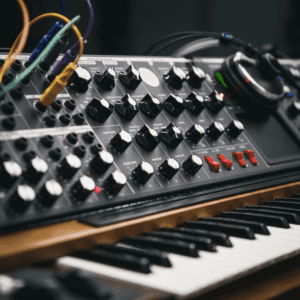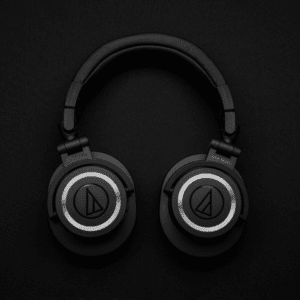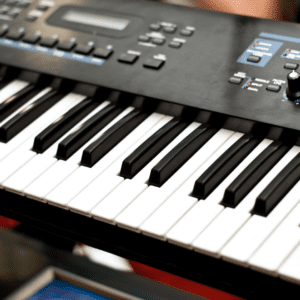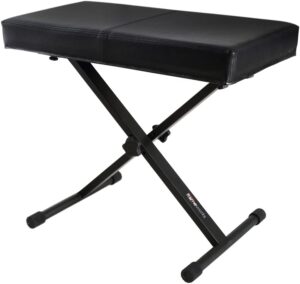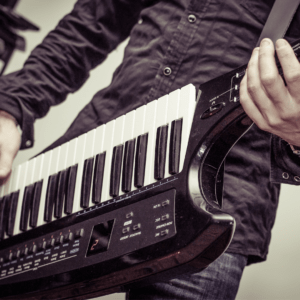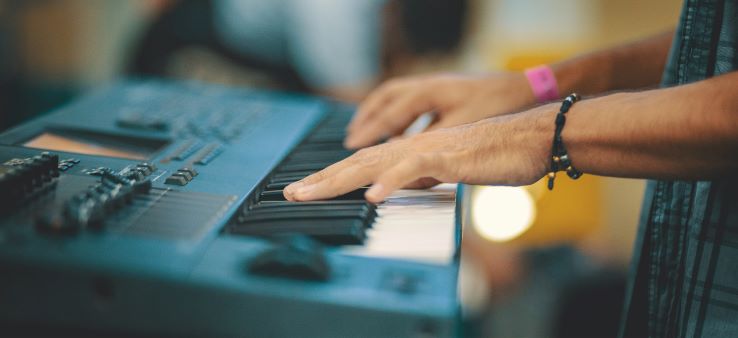
Humans have been making music for millennia. It’s no wonder we’ve invented so many musical instruments in the course of our existence. One of the most popular musical instruments today is the keyboard.
Shopping for a keyboard can be quite daunting, especially if you’re on a budget. Despite this fact, if you know the exact features you’re looking for, you can find one of the best keyboards under 1000 in no time.
But, you’ll still have to go through the hustle of finding one. So, we thought, why not make things a little easier for you? Here is the summary of what we think are the best keyboards under $1000:
| 1. Best digital piano with weighted keys under $1000 Yamaha P125 Highly portable and minimalistic design with authentic piano sound and realistic piano key touch response. | Buy on Amazon | |
| | 2. Best beginner keyboard under $1000 Casio CT-X700 A light weight affordable keyboard comes with hundreds voices and rhythms for you to entertain yourself | Buy on Amazon |
| | 3. Best portable keyboard under $1000 Roland Go PIANO A extremely lightweight keyboard with 88 semi-weighted keys with a minimalistic design and powerful speakers | Buy on Amazon |
| | 4. Best affordable digital piano under $1000 Alesis Recital Pro Most affordable digital piano with fully weighted 88 keys on the market | Buy on Amazon |
| | 5. Best keyboard workstation under $1000 Casio WK-7600 It comes with hundreds of tones, rhythms and sound editing technologies that help you create your very own music | Buy on Amazon |
Top 5 Best keyboards under $1000 Reviewed
1. Best digital piano with weighted keys under $1000 Yamaha P125
If you have worked with an acoustic piano before and want a keyboard that will match its sound and key action, this is as close as you can get to a real piano at a good price.
The P125 is very compact and lightweight, mostly due to its minimalist design and the fact that it is made of plastic. Its design is a hybrid cross between a stage piano and digital piano. I.e., it combines the usefulness of a portable keyboard with the functionality of a digital piano, making it one of the best stage keyboards under $1000.
The P125 uses the Yamaha Pure CF sound engine, which comes with samples from the Yamaha CFX Concert Grand Piano. To say the least, the sound from the P125 is simply exquisite. It also features organic sound elements like damper resonance and string resonance. All in all, it sounds almost like a real piano.
The keyboard of P125 uses the Graded Hammer Standard (GHS) technology that is also used by some more expensive Yamaha digital pianos. The GHS allows the key to have a heavier touch in the lower tones and a lighter touch in the higher tones, just like real pianos.
In terms of assembling, there’s literally nothing to assemble as it spots a plug and play design in functionality. It can work with a full digital piano stand or a simple X-frame keyboard stand. Yamaha has also designed a triple-pedal unit for the P125 to give you the full piano experience.
The P125 has separate buttons for all popular functions. There is a button for each voice group, recording functionality, rhythms, and metronome. You’ll find it very intuitive to play P125 compared to other digital pianos that tend to be packed with a lot of functionalities that you’ll never use.
This keyboard is also compatible with the Yamaha Smart Pianist IOS app. This app enables you to control all its functions from your iPhone or iPad.
Pros
- The keyboard is compact, portable, and lightweight
- Good speaker system
- It can connect to a computer and IOS devices
- Realistic piano sounds
Cons
- Limited choices of voice and rhythms
2. Best beginner keyboard under $1000 Casio CT-X700
If you are on a budget but don’t want to sacrifice the features that come with high-end models, then you should check out the CT-X700. Despite its super affordable price, this keyboard sounds like a professional thousand-dollar instrument. In addition to its great piano voice, this keyboard also offer hundreds of rhythms and voices and you’ll never find yourself bored of playing it.
We recommend this keyboard to anyone who want to get into learning keyboard and entertain themselves along the way. This is not the keyboard we would recommend if you’re super committed to learn piano and would wish to play on a real acoustic piano in the future.
The keyboard is light, has a compact design, and is encased in durable plastic. It comes with an AC adapter, but you can also power it with six AA batteries for added convenience. Like our previous pick, this keyboard comes with a sustain pedal jack. You also get ¼” audio in and a 1/8” audio out jack.
If you plan on composing your own music using music composition software, you will appreciate the built-in USB MIDI controller. It allows easy connection with computers.
It comes with 61 keys that produce high quality, realistic sounds. The speakers on its sides are of high quality, too, with the ability to produce loud and audible sound. Although the keys are not weighed, they produce realistic piano tones. To top it all off, the CT-X700 comes loaded with lots of hits that you can use to practice. You can also store your own music using the integrated recorder.
Pros
- It is affordable
- It has a sturdy and durable exterior casing
- It is compact, lightweight, and portable design
- It comes with up to 195 rhythms and 600 tones
Cons
- Only 61 keys, not ideal you want to learn classic pieces
- The keys are not weighted.
- The numerous buttons and features might be confusing for beginners.
3. Best portable keyboard under $1000 Roland Go PIANO
This is one of the best portable keyboards under 1000. This full-sized, 88-key keyboard weighs only seven kilograms and can run on batteries, allowing it to be carried and used liberally.
Roland Go Piano also has a minimalistic design. As one of the most reputable digital piano makers in the world, Roland digital piano is famous for its authentic piano sound. And Roland Go piano is no exception here. Though it only has a few tones, the piano voice is of higher quality than other keyboards of similar price. The organ voices are also remarkably rich. It also packs some pretty powerful speakers.
The lightweight does come with a drawback. Roland Go Piano‘s keys are are only semi-weighted. This makes it not an ideal digital piano if you want to play on acoustic piano eventually. On the other hand, other portable keyboard at similar price may comes with keys that are completely unweighted. So the smi making it sound much better than most portable keyboards out there.
When it comes to connectivity, it comes equipped with MIDI and Bluetooth connectivity. Therefore, it allows you to play along to tunes streaming right from your smartphone or other digital devices.
Pros
- It is compact
- It is a full-sized keyboard under 1000
- It has both 61 keys and 88 keys models
- It has MIDI and Bluetooth connectivity
- The keyboard can run on batteries
- It has powerful speakers
Cons
- The keys are semi-weighted.
- No line outputs
4. Best affordable digital piano under $1000 Alesis Recital Pro
This keyboard is great for anyone who’s just starting. It has a straightforward design and a ton of easy to use features that will make your learning process even simpler.
For example, it has a lesson mode that divides the keys into two parts, with the same tone, allowing you to sit next to your instructor when practicing. It also comes with an onboard MIDI outlet that enables you to connect it to your computer, so you can follow along with the screen as you play. The digital record system also comes in handy when composing music as it allows you to save it directly to your computer.
It features five different playing styles: organ, electric piano, acoustic piano, bass, and synth. You can also customize tones by combining two features to form one unique layered effect.
It is powered by an AC adapter but can also run on six D-Cell batteries. It also has a pretty powerful 20W speaker.
Pros
- Full-sized, 88 key keyboard
- 128 note polyphony
- In-built MIDI recorder
- The price is very affordable compared to other keyboards with weighted keys
- It can run on batteries
- It has a variety of sound effects
Cons
- The build quality is a bit cheap.
- The piano sound isn’t as good as that of some of its competitors.
5. Best keyboard workstation under $1000 Casio WK-7600
If you are looking for a powerful professional workstation on a budget, then you’d better check out the Casio WK 7600. It comes equipped with an array of features suitable for professional level composers. It also includes 9 sliders conveniently placed on the front panel, a 17-track sequencer, and more.
The Casio WK7600 comes with 820 preset tones and 64 notes polyphony to ensure an accurate and realistic representation of all sounds you need. The 9 sliders will even expand the possibility of sound further by providing 50 drawbar organ tones. The 260 preset rhythms will expand your music creativity to the fullest. You can store up to 100 user rhythms and 96 set up registrations. You can easily create splits of tones in different parts of the keyboard, or layer multiple tones. It also comes with build-in effects such as 10 types of reverb, 5 types of chorus, and 100 preset DSPs. The possibility of creating music on this workstation is endless. Be sure to take a look of the demo video below. I was completely blown away by this powerful yet affordable workstation.
The keys on Casio WK 7600 is touch sensitive, meaning the sound output will change based on the pressure applied to the keys. Not surprisingly, the keys are not weighted at such an affordable price. If you really want weighted keys, Yamaha P125 or Alesis Recital Pro are better choices for weighted keys under $1000. The Casio WK-7600 keyboard also doesn’t come with a sustain pedal. This M-Audio SP2 Universal Sustain Pedal could go well with you new Casio WK 7600.
Pros
- Affordable price
- Drawbar organ function for real-time sound creation
- 820 word class tones, rich and realistic. 100 additional user tones
- 260 preset rhythms, 100 additional user rhythms
- 96 set up registrations made of 6 sets and 16 banks
Cons
- Keys are not weighted
- Doesn’t come with build in song and lesson system
- Don’t come with sustain pedal
Guide To Buying Best keyboard under $1000
For a budget of $1000, there are three types of keyboards that you could choose from according to your need: keyboard workstation, arranger keyboard and digital pianos. Professional musicians who need to create their own music often use arranger keyboards or keyboard workstation. Pianist usually will choose digital pianos for more realistic piano key actions.
A keyboard workstation is an electronic instrument that integrates a keyboard with sequencers and a sound module. A keyboard workstation makes it easy to create original music.
The main feature sets the difference between arrangers and workstation keyboards is “auto-accompaniment.” With the push of a few buttons, an arranger keyboard provides backing tracks of your choice. You can adjust the tempo, style, and rhythm of the accompaniment based on the music style.
Arranger keyboards are popular among music producers who have to generate music swiftly, or in a style that they are not familiar with. They are also popular among songwriters who don’t know how to play the guitar or program drums. They can use the arranger keyboard to capture how their songs would sound when performed by a band.
What to look for when shopping for a keyboard?
1. Key action
The key action is basically how well the keys respond when pushed down. The key action of each keyboard model varies with resistance and firmness. If you want a keyboard that feels like a traditional piano, you should consider getting one with weighted keys. Keyboard with weighted keys are also often marketed as digital pianos. Those with unweighted keys are easier to push down. Keyboards with unweighted keys generally weigh a lot less.
2. Computer connectivity
Most high-end models are compatible with computers. Computer connectivity is not necessary for play. It is a good option for those who want to create their own music using music composition programs.
3. MIDI compatibility
MIDI (Music Instrumental Media Interface) is a common electronic instrument language. While not a necessary feature for beginners, this feature comes in handy when interfacing the keyboard with a computer.
5. Sampler/recording capabilities
If you want to create your own music, you should get yourself the best stage keyboard under 1000 with sampler and recording capabilities.
6. Sound
Sound is probably the most important factor to consider. Most high-end and even some of the best keyboard workstations under 1000 produce sounds similar to those produced by a true piano.
6. Keyboard size
Full-sized keyboards with weighted keys provide the most authentic acoustic piano experience. Though full-sized keyboards also weigh more and are less portable. Full-sized keyboards are also more expensive.
7. Storage
Although you can always download new software patches and sound on a micro-USB card, having a keyboard with added storage is a big plus. You should note that when it comes to keyboards, the storage feature usually refers to user settings. For example, a keyboard with 150 different sounds may have an additional 150 blank settings for new sounds.
What To Look For When Shopping For A keyboard workstation?
If you’re looking for a workstation, there are additional features that you need to pay attention to. A good keyboard workstation has music production features such as high-quality synth sounds and advanced patch mixing and editing. These features help to achieve the quality and versatility in music composition.
Types of synthesis
When compared to a generic keyboard, keyboard workstations have more options for creating unique sounds and effects. They work by employing diverse methods of sound and effects generation such as sample playback (a rendition of acoustic instruments) and analog modeling (used with electronic music).
Some keyboards offer full sampling functionality that enables you to record and produce any sound at different pitches across the keyboard. If you wish to work on all the bases, you opt to acquire a high-end workstation that has several synth engines. Keyboard workstations enable you to shape and design your sounds using a full-bodied control set that enables you to build patches from scratch or modulate hundreds of presets.
Combination sounds
One of the coolest things about keyboard workstation is the capacity to produce several sounds simultaneously. For example, film composers get to sequence strings, percussion, woodwinds, grand piano patches, and brass for a cinematic classical score. Likewise, songwriters can assemble a “band” consisting of organ, guitar, bass, and drums. Workstations that record audio can even allow you to add audio into the mix.
Live performers might decide to layer a choir, synth pad, piano, and violin for an exclusive amalgamated sound that they wouldn’t have gotten from any other kind of pianos or keyboards.
Sequencing and audio recording
MID sequencing comes in handy both when recording and playing music live. The push of a few buttons enables you to record numerous accompaniment parts on your keyboard. You can then play them during a live performance as a sequenced backing track.
Some keyboard workstations also come equipped with a line/mic input that allows you to record audio and integrate it into your track. Workstations also come in handy when performing cover music, as they offer you options like pre-programmed MIDI files that reproduce the music more precisely.
Effects dispensation
Applying effects to an audio track or MIDI can turn it into something unique. Most keyboard workstations come equipped with onboard effects processors. These effects include both master effects (can be applied to the total mix) and insert effects (applied on a single track).
Keyboard workstations with audio recording capabilities also come with sound-shaping tools like dynamics processing and EQ. They, therefore, give you the required control over the ultimate sound produced.
Conclusion
Gone are the days when you had to own an acoustic piano to play music. Nowadays, keyboards are replacing pianos at every turn. They are cheaper, have more tunes and sound almost as good as the real thing.
In the article, we have reviewed five of the best synthesizer keyboard under 1000. Our favorite budget pick is the Casio CT-X700. It has some pretty impressive features like the USB MIDI controller and recording capability, features only found in higher priced models.
If you don’t mind digging a little deeper into your pocket, consider getting the Yamaha P125. It comes equipped with all the features and realistic acoustic sounds you need. It is pretty powerful, too, making the best stage keyboard under 1000 on our list.
Before choosing which keyboard you want to buy, make sure you read through the buying guide section to know the features you should look out for.
Last update on 2023-04-27 / Affiliate links / Images from Amazon Product Advertising API


